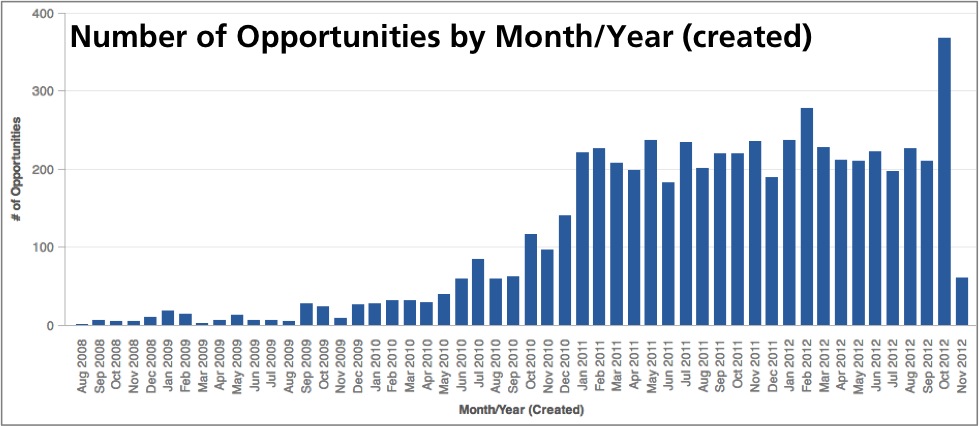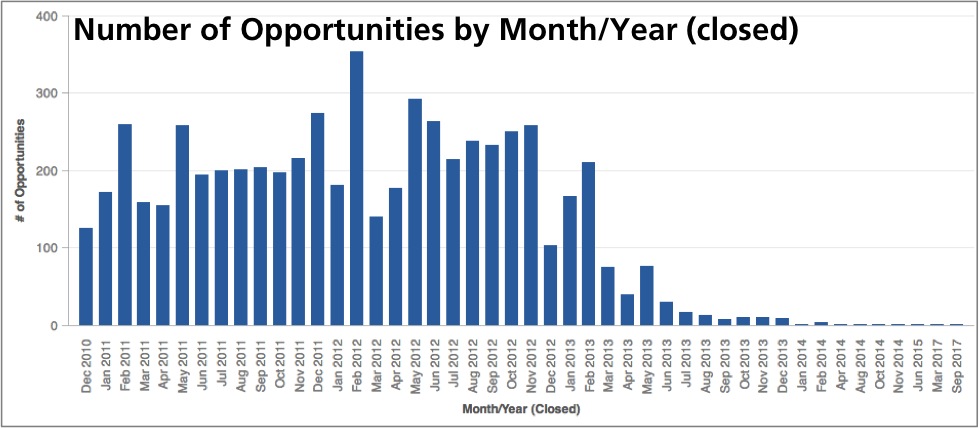Dates and Times
When date data is loaded into your workspace, it is stored in a special object called a Date dimension.
The platform uses the Date dimension to represent date in many different ways in your workspace.
Your workspace may include multiple date dimensions, each associated with a different event.
Example
For example, the GoodSales sample workspace contains information about sales opportunities, including the date each opportunity is created and the date it is closed. Opportunity creation and close dates are distinct dimensions because each represents a different event.
Opportunity creation and closed date events are also distinct from dates that represent the day a sales rep has performed a sales action, such as sending an email, placing a call, or hosting a webinar. These types of events can be considered activities in the sales pipeline.
You can slice metrics only by those date dimensions that relate to that metric.
Date Dimensions in a Logical Data Model
The simplified logical data model below shows how date dimensions (blue) are mapped to various workspace attributes (green). Each date dimension contains an array of date attributes that are related to one another in a specific hierarchy.
The date dimension used to slice a workspace metric significantly affects how your data is categorized and represented in a report.
Although both of the above reports compute the same metric across overlapping time periods, each report measures the metric for a different event (opportunity created versus opportunity closed).
Limitations of the Logical Data Model (LDM)
You cannot slice a metric by every date dimension in your workspace. You can only slice workspace metrics by attributes in date dimensions that relate to the metric’s underlying facts (or attributes, in the case of a COUNT metric).
In the simplified data model above, notice that the date (activity) dimension does not connect to the Opportunity attribute. It is not possible to slice the Number of Opportunities metric by an attribute of the date (activity) dimension.
In the Report Editor, attempting to break a metric across an unrelated date dimension results in the following message:
Report not computable due to improper metric definition
Reading the Data Model for Dates
To understand which date dimensions you can use to slice a particular metric, go to Manage → Model to open the data model.
To access the Manage page, you must be an Editor or Administrator in your workspace.
As a general rule, a metric that is an aggregation of some fact or attribute can be sliced by a date dimension that points (directly or indirectly) to that fact or attribute.
In the logical data model below, date dimensions (representing entire arrays of date attributes) are shown in blue, attributes in green, and facts in yellow ovals.
A metric aggregated from the Velocity fact could be sliced by attributes within the Date (Created) dimension but not by attributes within the Date (Activity) dimension.
To learn more about using the concepts of time and dates in your reports, see the following topics:



